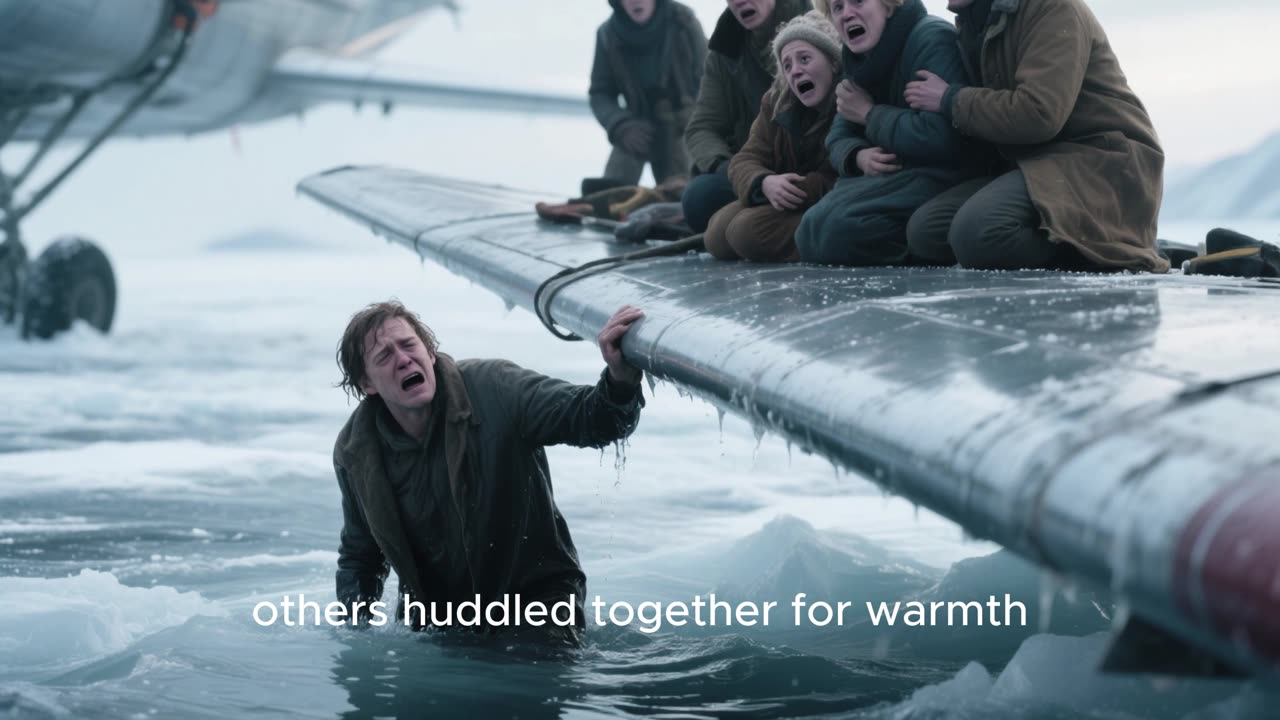Premium Only Content

Miracle on the Hudson
The morning of January 15, 2009, began like any other winter day in New York City. The sky was a pale silver, the air sharp with cold, and the Hudson River flowed dark and still beneath a crown of frost. People hurried through airports and subways, chasing the rhythm of their routines, unaware that within hours, an event would unfold that would remind the world of the fragile line between disaster and deliverance. It began at 3:25 in the afternoon, when US Airways Flight 1549 prepared for takeoff from LaGuardia Airport, bound for Charlotte, North Carolina.
The aircraft, an Airbus A320, looked ordinary as it rolled toward the runway, its engines humming with precision. Inside sat 150 passengers and 5 crew members, among them Captain Chesley “Sully” Sullenberger, a calm, seasoned pilot with forty years of flying experience, and First Officer Jeffrey Skiles, who was co-piloting his first flight on this particular aircraft model. To the passengers, it was just another journey home — a quick hop down the East Coast before dinner. None of them imagined that within minutes, they would be fighting for their lives over the icy waters of Manhattan.
At 3:27 p.m., Flight 1549 lifted into the sky, climbing steadily over the Bronx. The takeoff was smooth, the engines strong, the city sprawling beneath them like a maze of glass and steel. But then, only ninety seconds later, it happened — a flash of movement in the cockpit window, a sudden thud, and then another. A flock of geese, invisible until that instant, struck the plane. The engines swallowed the birds at full thrust. There was a series of loud bangs, followed by silence. Both engines had failed.
Inside the cabin, the lights flickered. The familiar hum of flight faded into an eerie quiet. The plane began to descend, gliding over the city with no power. Passengers looked at one another, confused, unaware of what had happened. In the cockpit, alarms blared. Sully’s hands were steady on the controls. His voice was calm, almost unreal. “My aircraft,” he said to Skiles. “Your aircraft,” Skiles replied. They switched seamlessly, trained reflex guiding them in a moment that defied panic. Sully keyed the radio and spoke words that would later echo in aviation history: “Mayday, Mayday, Mayday. This is Cactus 1549. We’ve lost thrust on both engines. We’re turning back toward LaGuardia.”
But even as he spoke, Sully knew the truth. They would never make it back. They were too low, too slow, and the plane was gliding without power over one of the most densely populated cities on Earth. Air traffic control offered them alternatives — LaGuardia, Teterboro, Newark — but each was too far. In those seconds, Sully made a decision that would defy every rule and save every life aboard. He said six words that sealed his legacy: “We’re gonna be in the Hudson.”
The plane descended rapidly, the city racing up toward them. People on the ground looked up and saw an airliner gliding silently between skyscrapers, its engines dead, its wings steady. Inside, passengers gripped hands, prayed, cried. The flight attendants shouted, “Brace for impact! Heads down! Stay down!” Time stretched thin, every heartbeat louder than the next.
At 3:31 p.m., just over three minutes after the bird strike, Flight 1549 hit the Hudson River. The sound was like thunder rolling underwater. The aircraft’s belly slammed against the freezing surface, sending walls of water exploding up the sides. The impact tore open panels and ripped through the fuselage, but miraculously, the plane stayed intact. It skidded across the river for hundreds of feet, slowing until it floated still, half-submerged, surrounded by mist and silence. Then came the first sound — a single voice saying, “We’re alive.”
In the cockpit, Sully exhaled for the first time in minutes. “This is the captain,” he said over the intercom, “Evacuate. Evacuate.” The cabin doors opened to an unreal sight — freezing wind, gray water, and the skyline of Manhattan in the distance. Passengers climbed onto the wings, balancing on the slick metal as the plane slowly filled with water. Some waded into the river, others huddled together for warmth. The temperature was below freezing; hypothermia was minutes away.
But help came faster than anyone thought possible. From every direction, ferries, police boats, and rescue crews sped across the river. The first to arrive was the ferry Thomas Jefferson, whose crew threw life rings and pulled passengers aboard with bare hands. Within minutes, dozens of rescue vessels surrounded the plane. Passengers were carried to safety, wrapped in blankets, their faces pale with shock. They had survived what should have been impossible — a crash landing on water with zero fatalities.
As the last passenger was lifted to safety, Captain Sullenberger walked the length of the cabin twice, checking every seat. When he reached the end and saw that it was empty, he was the final person to leave the aircraft. Standing on the wing, he looked once more at the city skyline, then stepped into the lifeboat. Later, he would be hailed as a hero, but when asked what he thought in those moments, he said simply, “I was just doing my job.”
The world called it The Miracle on the Hudson. Investigators confirmed that no simulator, no manual, no procedure could have produced a better outcome. The decisions made in those few minutes — from shutting down the engines to gliding altitude to water landing — were perfect. Out of the chaos of mechanical failure, discipline, humanity, and calm had saved one hundred and fifty-five souls.
In the days that followed, images of the plane floating in the Hudson became symbols of grace under pressure. Newspapers wrote of courage and luck, but those who were on board spoke of something deeper — the sound of silence before the crash, the feeling of time standing still, and the realization that life is more fragile than anyone ever imagines. Many passengers said that when they stepped onto solid ground again, every sunrise after that felt brighter, every hug tighter, every ordinary day more sacred.
The Hudson River has seen countless stories of loss, but on that freezing afternoon, it witnessed something else — proof that even in moments when everything fails, when the engines die and the sky itself seems to collapse, there is a kind of strength that no storm, no silence, and no fear can defeat.
-
 LIVE
LIVE
MattMorseTV
40 minutes ago🔴Trump's '60 Minutes' INTERVIEW + MUCH MORE.🔴
738 watching -
 LIVE
LIVE
Dr Disrespect
8 hours ago🔴LIVE - DR DISRESPECT - ARC RAIDERS - FULL SEND INTO THE RED
1,523 watching -
 1:02:08
1:02:08
BonginoReport
2 hours agoNicki Minaj Speaks Out Against Christian Persecution - Nightly Scroll w/ Hayley Caronia (Ep.169)
9.17K13 -
 LIVE
LIVE
SpartakusLIVE
2 hours agoSNIPING in Battlefield 6 - REDSEC || Monday MOTIVATION to CONQUER the Week
79 watching -
 LIVE
LIVE
Nerdrotic
1 hour agoNerdrotic At Night 531
363 watching -
 LIVE
LIVE
TheCrucible
42 minutes agoWATCH PARTY! Coach Greg Adams vs Andrew Wilson: Marriage in the West is Good For Men (11/03/25)
1,275 watching -
 LIVE
LIVE
The Jimmy Dore Show
1 hour agoTrump Threatens to INVADE Nigeria! Kash Patel CRASHES OUT Over Jet Use Criticism!
5,289 watching -
 LIVE
LIVE
Conductor_Jackson
20 hours agoLet's Play Unrailed 2 Solo! 🚂🚂🚂🚂🚂🚂
28 watching -
 1:25:38
1:25:38
Kim Iversen
3 hours agoTrump’s Nigeria Threat Isn’t About Christians — It’s About China
63.3K55 -
 LIVE
LIVE
VikingNilsen
6 hours ago🔴LIVE - ARC RAIDERS - QUEST GRINDING
12 watching